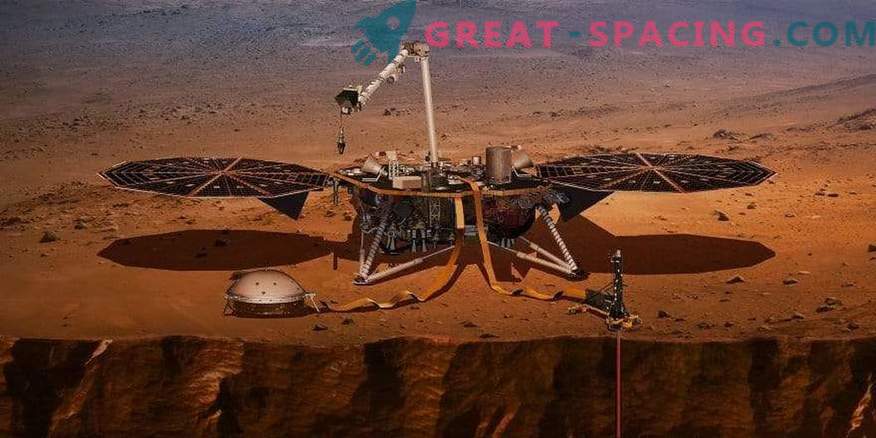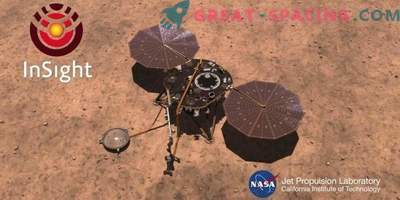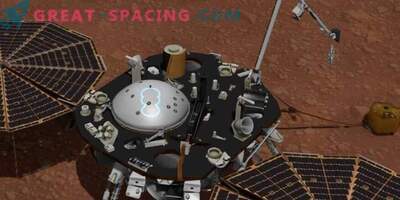
Artistic vision of the InSight module. The touch node of the seismometer (under the protective screen) is shown on the front right
On May 5, the InSight mission traveled to Mars. This is the first mission dedicated to the study of the internal structure of the Red Planet. It must answer the key questions: “Why did Earth and Mars converge in their original structure and chemical composition, but evolved differently? How large, dense and dense will the core, mantle and crust be? What is their structure? ”
Seismometer for extreme conditions
The landing gear is endowed with geophysical instruments. A special seismometer is also installed among them. After landing at the end of November 2018, the device will be engaged in registering seismic vibrations and transmitting data to the Earth. Scientists from the Institute of Geophysics have already begun preparing an analysis of the data. Using the Piz Daint supercomputer, researchers calculated seismic wave propagation in 30 different Martian models.
For a catalog of models, scientists combined all the available knowledge about the planet and used it to calculate synthetic seismic data that can be obtained from Mars. Then these data were used to conduct a blind test, in which they invited world experts for a broad interpretation and exchange of experience.
Universal Wave Modeling Code
In order to study in more detail the influence of the 3D structure of the Martian crust, researchers from the Swiss Higher Technical School of Zurich (ETH) simulated seismic waves on Mars using the Salvus code. This code is flexible and can be used for wave propagation issues on different carriers at different scales.
Shaking Simulator on Mars for the InSight Mission
The Martian simulation on “Piz Daint” works in real time on 7200 cores. That is, the calculations are taken until the seismic waves pass through the Red Planet. Depending on the internal structure of the planet, the waves move at different speeds and pass through various routes from the source to the seismometer. Elapsed time will help to better understand the structure of the planet and the properties of rocks.
Visualization when launching a mission
Researchers visualized one of the numerical simulations in a video. He was shown at a NASA press conference while launching a Martian rocket. You can see the waves moving on the Martian surface, rotating around the planet and passing through the landing module three times. It is important to measure the waves during each pass, as this will allow you to collect data about the planet, identify the time and location of the Mars shake, and also calculate the approximate structure using one seismic station. On Earth, large earthquakes are generated by tectonic processes, where continental or oceanic plates collide and slip under each other. While it is believed that plate tectonics on Mars is devoid of activity. But within two years of operation, meteorite impacts or reductions due to the cooling of Mars are expected, leading to seismic events.
Preliminary simulations allow us to estimate the data
Seismic waves on Mars have never been recorded by such a sensitive instrument, so numerical simulation is the only way to prepare for the evaluation of NASA InSight mission data.
Using the calculated models, it is checked how certain structures, such as the thickness of the crust, affect the measurement. It helps to test methods and understand the seismograms on the Red Planet. To understand the Martian structure, ETH scientists compare actual measurements with simulated data. This is where the catalog of Martian models comes in handy.











































